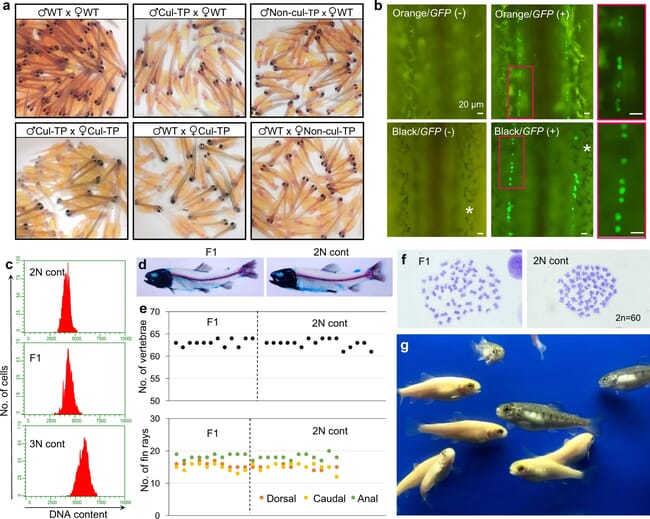A team from Tokyo University of Marine Science and Technology spawned 1,700 rainbow trout after producing sperm and eggs using GSCs from just one male, it said in a study published in Communications Biology this week.
The researchers note that “combining cryopreservation of GSCs with their subsequent transplantation into recipient fish is a powerful tool for long-term preservation of genetic resources of endangered fishes. However, application of this technique has been limited because endangered species sometimes have small gonads and do not supply enough GSCs to be used for transplantation. This limitation could be overcome by expanding GSCs in vitro, though this has been difficult due to the complexity of reconstructing the gonadal microenvironment that surrounds GSCs.”

F1 offspring hatchlings were produced by a cross-breeding experiment with wild-type (WT) diploid trout, triploid recipients that received in vitro-expanded ASGs (Cul-TP), and triploid recipients that received freshly prepared testicular cells (Non-cul-TP). © Tokyo University of Marine Science and Technology
However, the researchers explain how they used a “novel method of in vitro expansion of rainbow trout GSCs using a feeder layer derived from Sertoli cells and a culture medium containing trout plasma. A transplantation assay demonstrated that the in vitro-expanded GSCs exhibited stem cell activity and potency to produce functional eggs, sperm, and eventually healthy offspring”.
The GSCs were Petri-dish cultured for 28 days in certain conditions before being transplanted to male and female rainbow trout.
Sperm and eggs were successfully produced after two years and subsequent fertilization was also normal, with eventual production of healthy offspring, the team said.
Hope for endangered fish species
The researchers believe that this was the first study to produce functional eggs derived from in vitro-expanded cells in any teleost species and hope their success can be replicated to help at-risk fish stocks once it has been fine-tuned.
"We can apply the methods within the next few years for conservation projects of Salmonidae similar to rainbow trout," said Goro Yoshizaki, a professor of marine biology and resources at the university, who led the team.
Looking ahead the team aims to produce bluefin tuna by transplanting their GSCs into mackerel - as they are smaller, grow faster and cost less – within the next five years.



